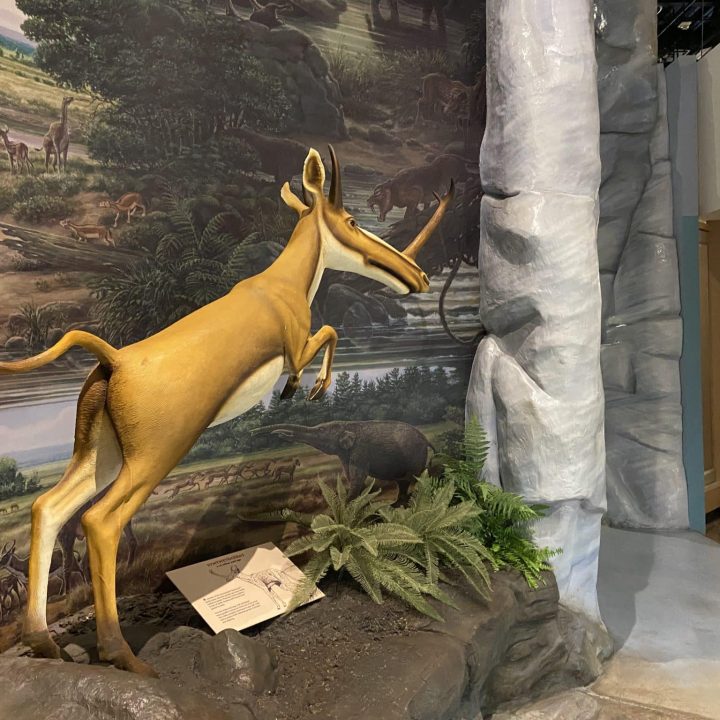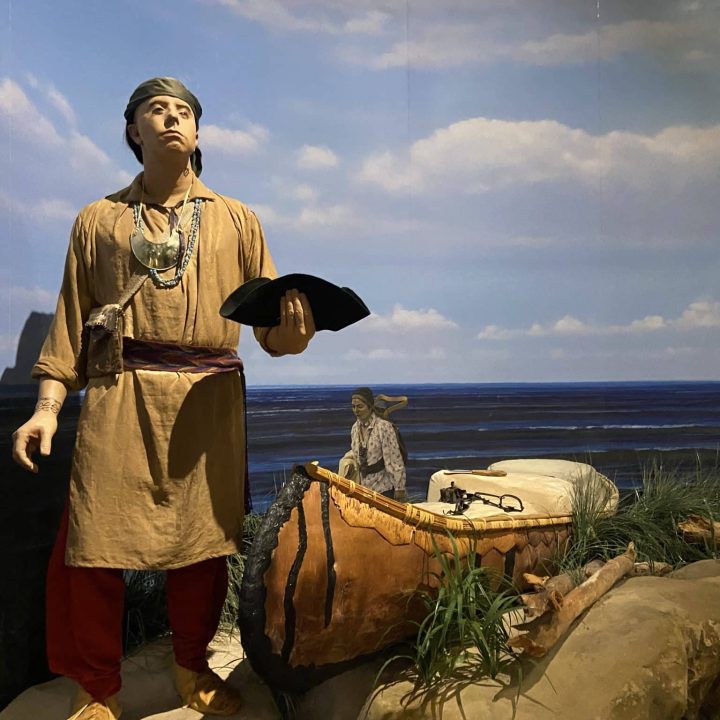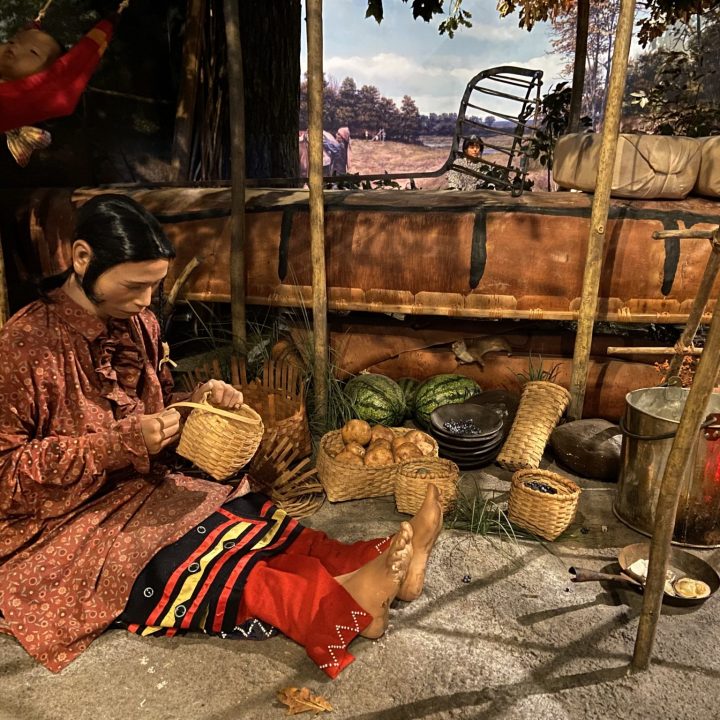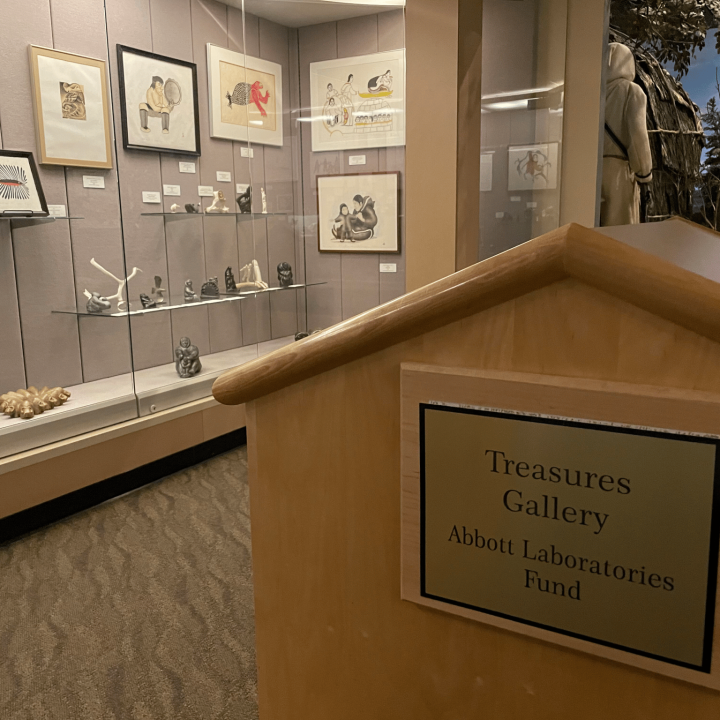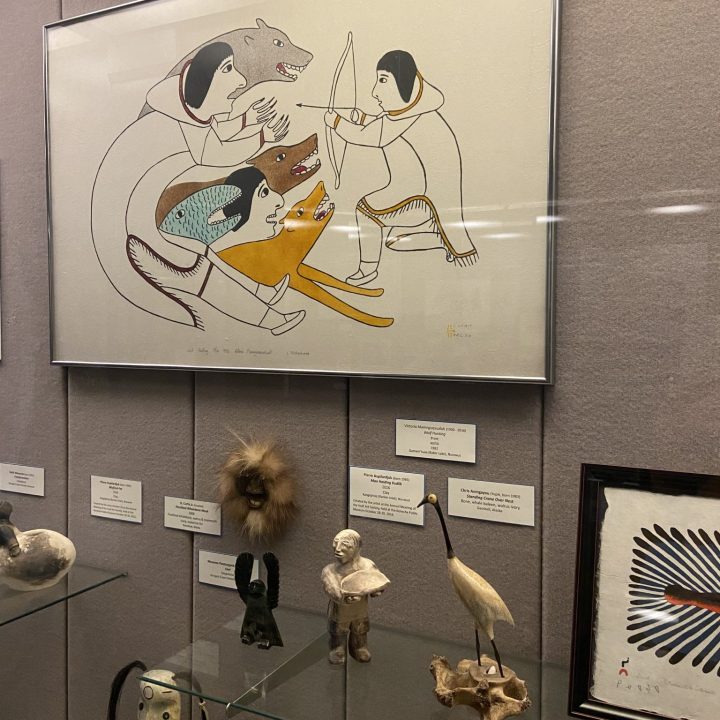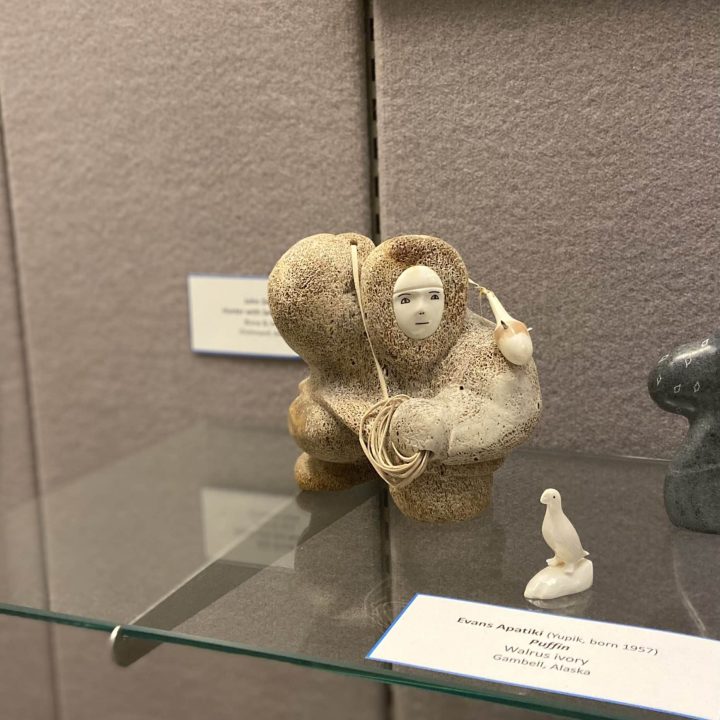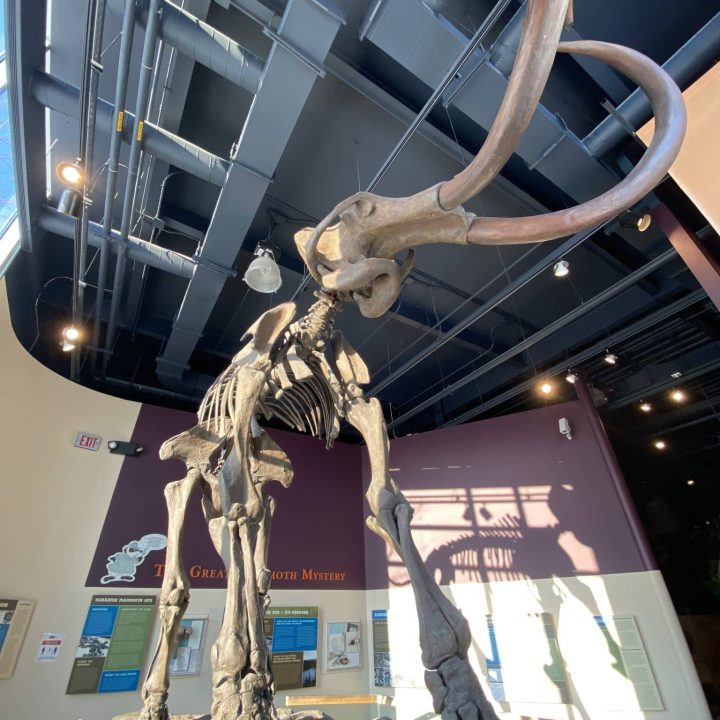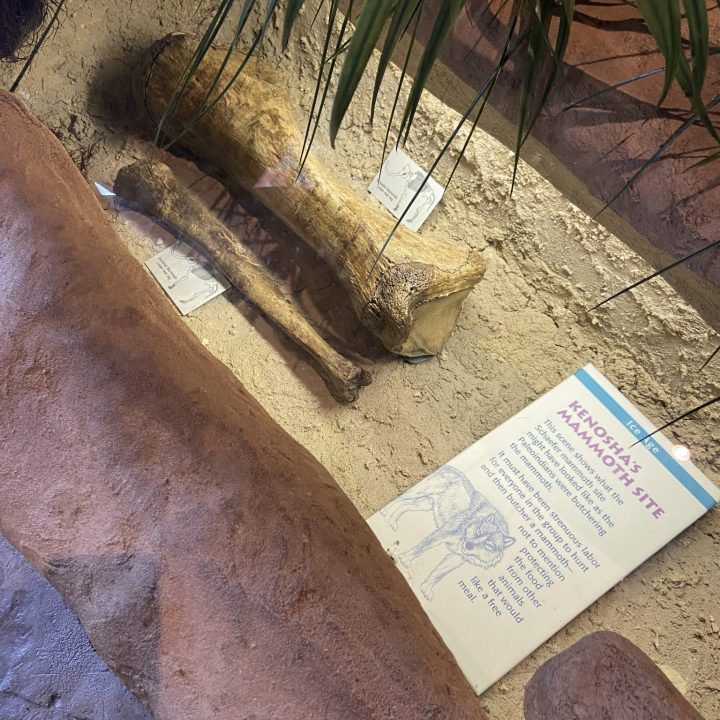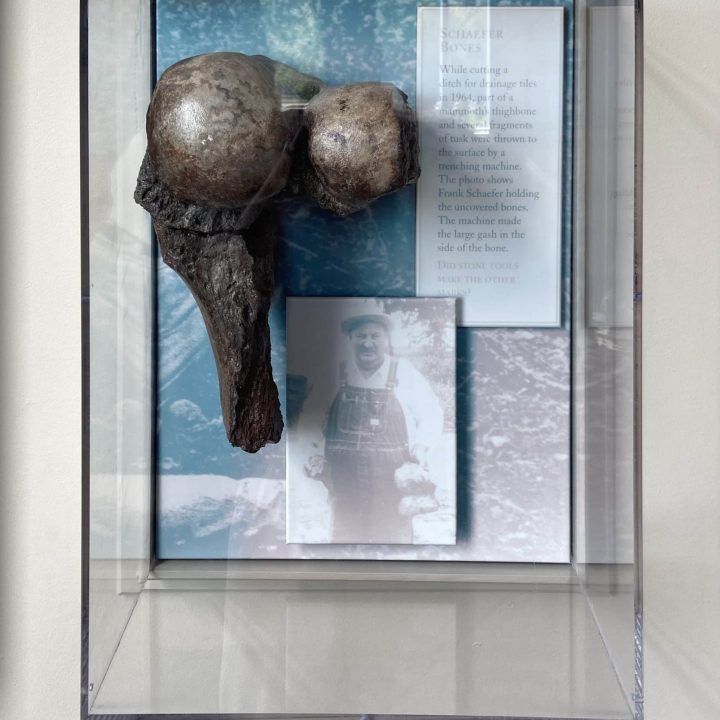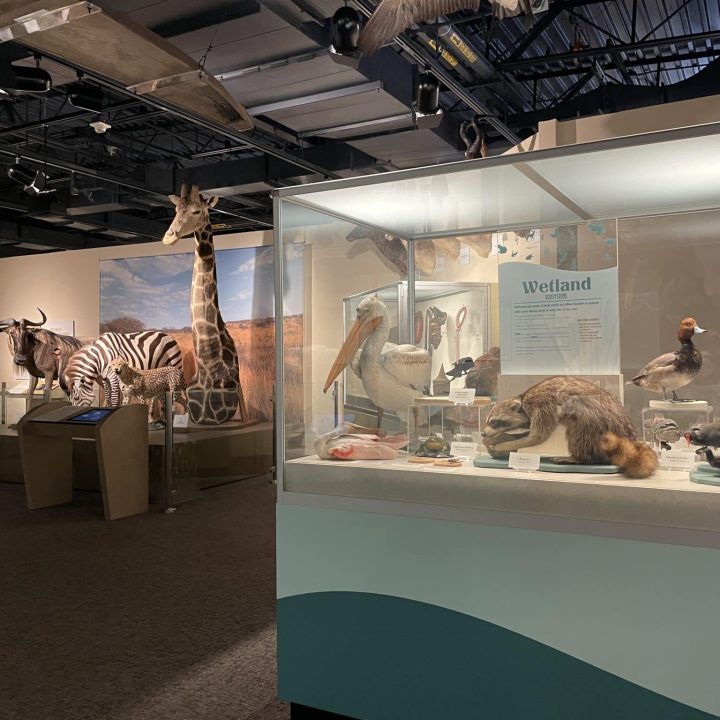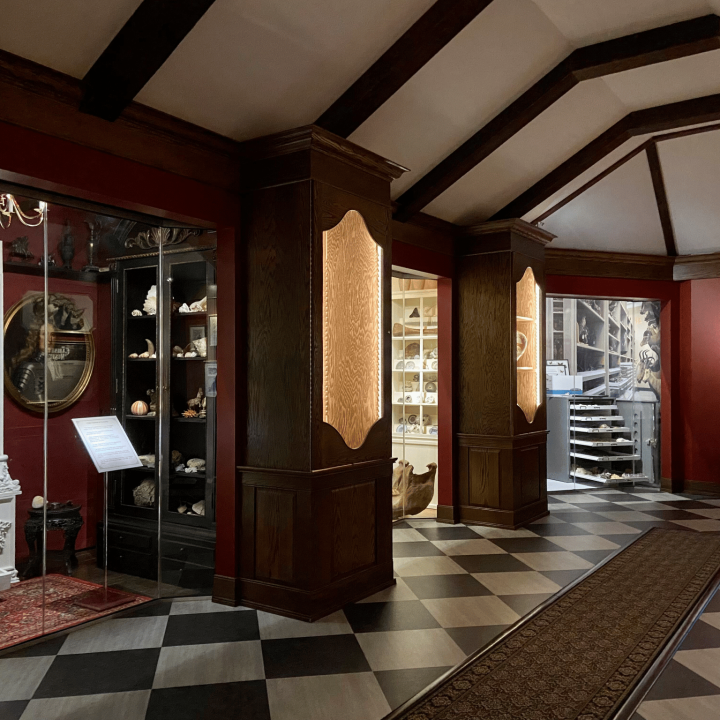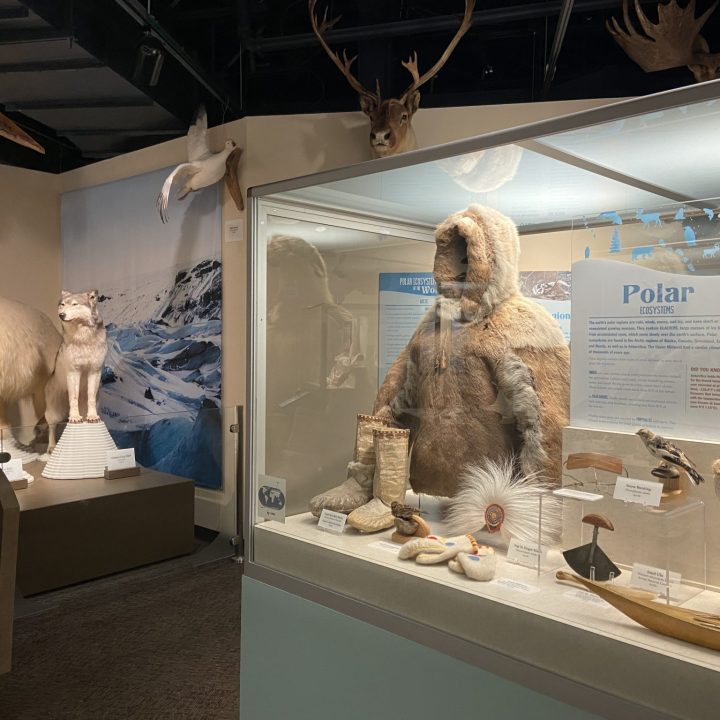The Wisconsin Story
The Wisconsin Story is a larger-than-life, multi-disciplinary adventure.
Visitors experience the change in climate, development of ecosystems, evolution of plants and animals, and the lives of Native Americans as it happened in our area over hundreds of thousands of years. Walk through 425 million years of history from the time Kenosha was at the bottom of a shallow tropical sea, through the ages of insects, dinosaurs and mammals, and ending in 1830 with a Native American village.
The Schaefer mammoth, excavated by the Museum, is a highlight of the exhibition. It documents the earliest interaction of mammoth and man east of the Mississippi River. A Schaefer mammoth replica is set in a special floor display exactly as found on the Schaefer farm in Paris, Wisconsin. Further research on the Schaefer mammoth bones tells us that this site is one of the oldest sites of human habitation in all of the Americas.
The Hebior mammoth was excavated in Kenosha County, Wisconsin and is the largest, most complete mammoth excavated in North America. A life-size replica of the Hebior mammoth was purchased by the Friends of the Museums for this exhibition.
Highlights of the Exhibition Include:
- Coral reefs and primitive monsters of the deep
- The Ice Age and the eventual melting of glaciers
- Schaefer mammoth dig
- Hebior mammoth replica
- Native Americans of Wisconsin story
The exhibitions corresponds to school curriculum needs.
Treasures Gallery
Current exhibit: The Claude Weil Inuit Art Collection
The Inuit are a group of Indigenous peoples of the Arctic and subarctic regions of the far northern hemisphere. Their homelands encompass vast, remote regions of Arctic Canada, northern and southwestern Alaska, Kalaallit Nunaat (Greenland), and far eastern Russia. Their total population is estimated to be 180,000 people. By comparison, about half as many people live in Kenosha, Wisconsin.
Inuit people are culturally and linguistically unique. They identify themselves by their traditions and spoken dialects. All Inuit share similar traditions and skills, developed over thousands of years to survive and thrive in the cold, often dangerous conditions of the Arctic. These include wilderness knowledge, technologies, creative use of local materials, reverence and respect for the natural world, and cooperative ways of life.
Inuit traditions reflect and enhance the richness and complexity of life in the Arctic. Inuit art also reflects the creative vision and resourcefulness of the individual artists, who use mainly stone, bone, and paper to record their history, personal experiences, and to contemplate the greatest mysteries of life. These artists have also found their place in an increasingly complex and changing world by preserving old ways while embracing new artistic traditions.
Mammoths at the Museum
Schaefer Mammoth Discovery
The Schaefer mammoth discovery began in 1964, when a farmer by the name of Frank Schaefer had hired a man to cut a drainage tile ditch through his field. While excavating the ditch, the contractor hit something that literally knocked him off his feet. Remarkably he had banged into the end of a woolly mammoth’s femur. A little more digging revealed tusk fragments.
At the time, Phil Sander, a local amateur archaeologist, sketched a detailed map of the site, and Mr. Schaefer donated the bones to the Kenosha Public Museum.
Dan Joyce used Sander’s map almost 30 years later, in 1991, to relocate the site on the Schaefer farm. After about 18 months of painstaking work, he and his team of volunteers discovered the nearly complete remains of the oldest known mammoth believed to have been butchered by humans with tools east of the Mississippi River. The Schaefer mammoth was 80 percent complete.
“The mammoth had died near the edge of a lake formed by glacier melt. Because it died thousands of years before the advent of bows and arrows, it was likely killed by Paleo-Indians wielding thrusting spears,” Joyce explained.
During the excavation of the Schaefer site, Frank Schaefer’s neighbor, John Hebior, approached Mr. Schaefer about a large bone he had uncovered on his farm many years before the Schaefer mammoth was discovered.
Hebior Mammoth Discovery
One year after the Schaefer mammoth was excavated, Wasion went to work again, this time with archaeologist Dr. David Overstreet, on excavating the Hebior mammoth. What they discovered was that like the Schaefer mammoth, the Hebior mammoth was disarticulated and possessed the cut marks and stone tools which led to the conclusion that it, too, was butchered by humans.
The Hebior mammoth is the most complete mammoth (90 percent) ever excavated. It is also the largest wooly mammoth ever excavated; and it and the Schaefer mammoth site are two of the three oldest archaeological sites in the Western Hemisphere.
Originally thought to be 10-12,000 years old, carbon dating later established the bones are 12,500 radiocarbon years old (14,500 years ago).
Eileen Johnson, an archaeologist from Texas Tech University, said, “there appears to be marks that were made by tools, certainly by people.” This meant people were in Wisconsin 1,000 years before what was previously thought to be the oldest discovered human community in the Western Hemisphere–Monte Verde in southern Chile.
From Curiosity to Science
Humans are curious. This curiosity has led to collecting, scientific inquiry and the development of science, and the establishment of museums. This exhibition tells that story.
“From Curiosity to Science” will lead you on a journey of discovery from a 1600s Cabinet of Curiosity through modern museum collections and displays to scientific study of the natural world. Using ecosystems as a case study, the exhibition shows natural science research is vital and on-going.
As you walk through the Cabinet of Curiosity, you’ll see more than 500 objects, specimens, animals, artwork, artifacts and more. Cabinets like this one, demonstrating human curiosity, led to the development of natural sciences and museums. At the other end of the cabinet, you will be transported back to our modern museum.
Explore six local ecosystems – water, wetlands, grasslands, forests, polar, and arid – and compare them with a global example to discover the plants, animals and people who rely on and impact those ecosystems. Get up close to a life-sized polar bear. Play games to help humans and animals find food, water and shelter. Watch videos of scientists researching in the field, and learn how you can make an impact on our planet.
Highlights of the Exhibition Includes:
* Many taxidermy animals on display from six different ecosystems
* Hands-on games and activities for all ages
